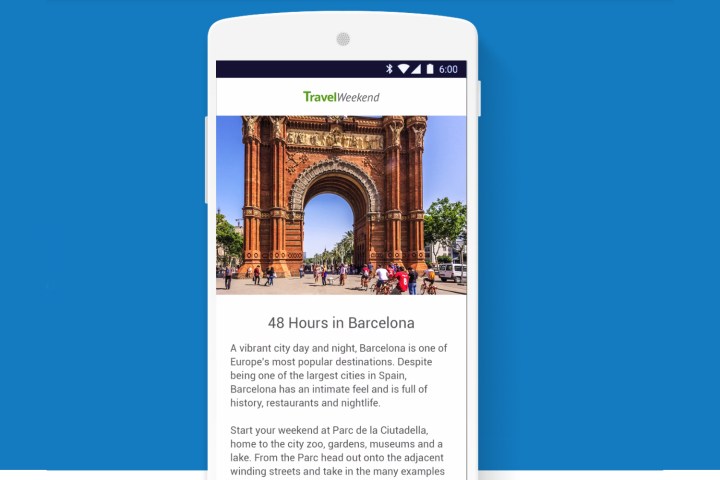
The goal of AMP is to speed up news on the mobile Web by caching the webpage before the user clicks. Photos, video, and adverts will load much faster than normal, hopefully keeping the user on the page for longer periods of time and keeping them engaged with the content. Now that AMP is expected to hit the mobile Web this year, we have more information about the program, which partners will be involved, and how the ads will work.
Updated on 02-19-2016 by Robert Nazarian: Added in leaked start date.
Previous rumors indicated that AMP would launch in February, but Google has yet to announce a specific date. However, Ad Age has learned that AMP will launch on February 24, according to sources familiar with the matter. We’re taking this with a grain of salt since Google hasn’t officially confirmed this date.
Since Google is working on the project, AMP is open-source and available on Github. Twitter has already partnered to make those articles load much quicker on its mobile site and app. Twitter’s partnership with Google comes alongside the launch of Moments, its own news curation service. Pinterest, WordPress.com, Parse, and LinkedIn have also agreed to work on AMP.
Google claims its search results will not be skewered in favor of AMP articles, but speed will be a major factor in users’ decisions on where to read the news. Google plans to make AMP available to any publisher, but for now it is using the Facebook Instant Articles model of accepting one publisher at a time. Google has already brought a vast selection of publishers on board, including Vox Media, Conde Nast, BuzzFeed, and The New York Times. The publications have been beta testing AMP since the fall of 2015.
Google has not published any details on terms of service for publishers, but it may include lowering adverts for sites with too many active. Publishers that use Facebook and LinkedIn to promote articles will also benefit from the change, since linked articles will load much faster on those platforms, if the site is using AMP.
The mobile Web is still a huge traffic source for publishers, but more users are choosing apps like Apple News, Flipboard, and Twitter to get their news. Google wants to make the mobile Web fast enough to feature all types of multimedia, without being slow for the user.
Google is already one of the most powerful companies in the publishing space. Google News and search results are a main source of traffic for news sites. AMP might not seem like a big move for Google, but it establishes another platform that publishers must support to have fast loading speeds, a factor that could be the difference between an article that ends up at the top of the search results and the article that is buried in-between the hundreds of other articles.
As far as advertisements go, the AMP team recently went into more depth about precautions for publishers. For users worried about malware tucked away inside adverts, you’ll be glad to hear that HTTPS protocol is a necessity. Google is also pushing ad networks to be more “innovative” with adverts, which we hope translates to less annoying ads.
Unlike Facebook’s Instant Articles and Apple News, Google’s platform does not force publishers to present the news using a premade template. That might be a plus or negative, depending on how you enjoy reading your news. It does mean the only noticeable difference between an AMP and non-AMP article will be the loading speed.
There are still a lot of questions surrounding AMP, most importantly if the super-fast speeds will available on Google’s iOS app at launch. We also don’t know when the publications will start supporting AMP, and if this support will be added to the service’s mobile apps. We’ll keep you updated on the news as we learn more.
Previous updates:
Updated on 01-26-2016 by David Curry: Added more details about advertising on AMP and when it will launch on the mobile Web.
Original post from October 7, 2015


